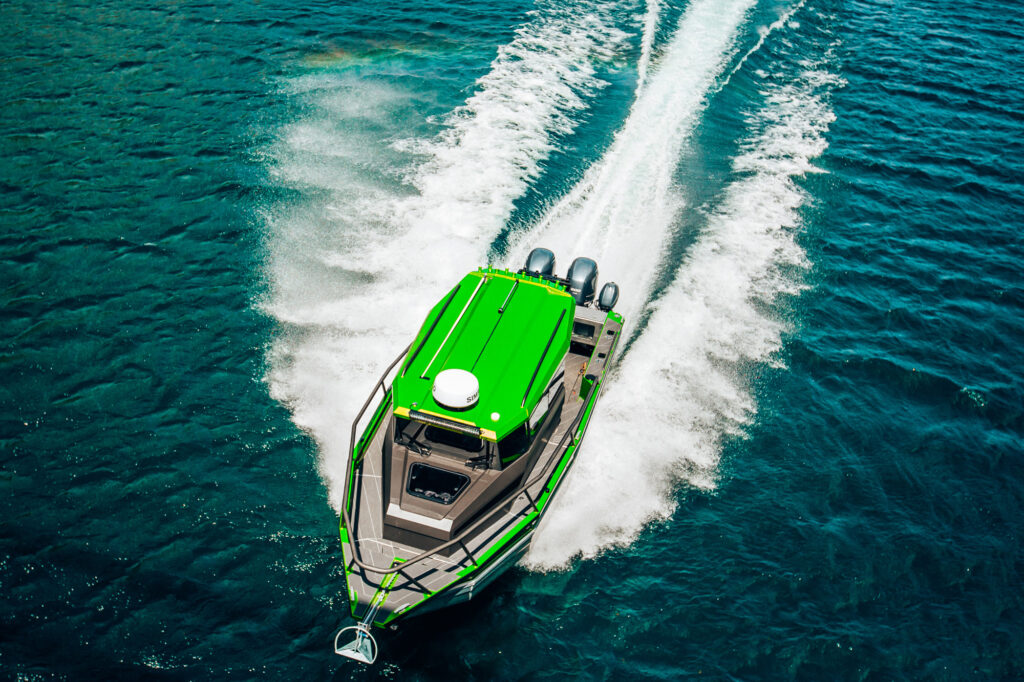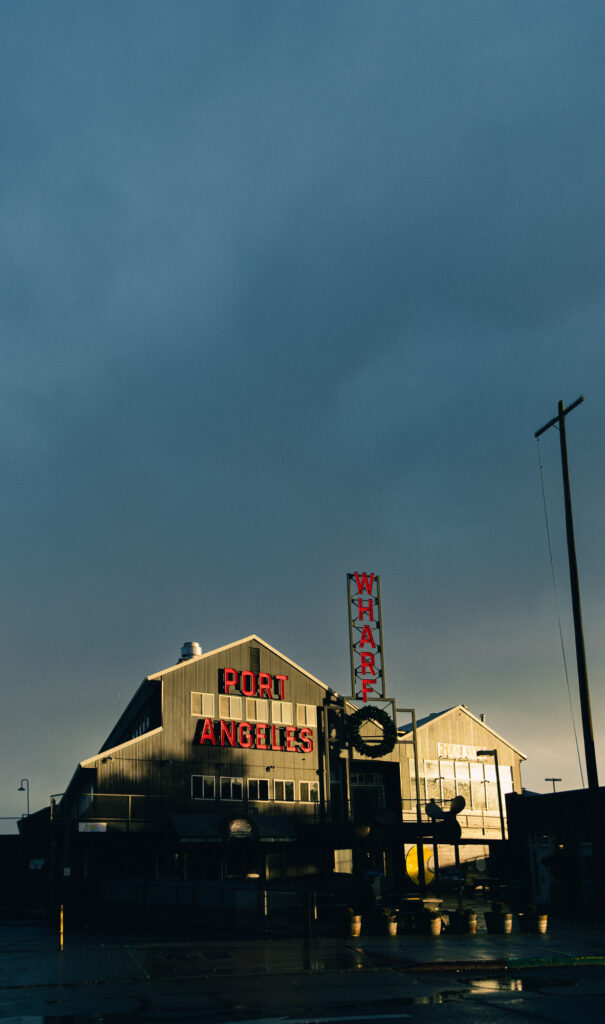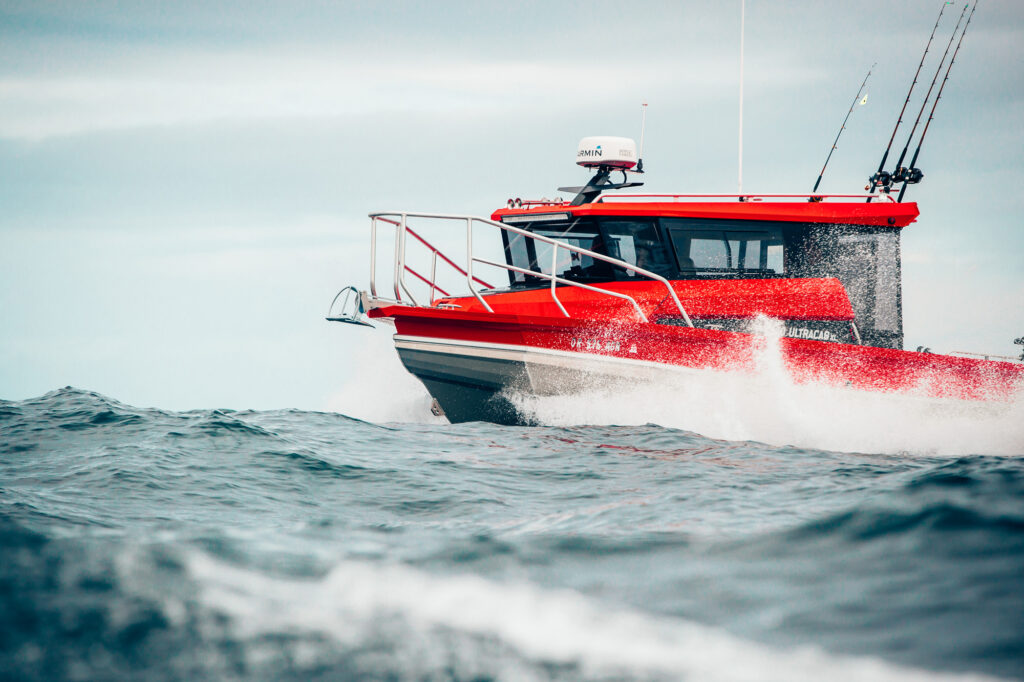
Brix Marine; Safeboats; ACI Boats; Lee Shore; Crozier Craft; Life Proof Boats; Stabicraft. Though that last brand name may be known to savvy Northwest boaters, the company it now keeps may raise a few eyebrows: The New Zealand-based Stabicraft recently opened its first U.S. production facility in Port Angeles, thereby joining the ranks of the five others manufacturers that churn out hulls on the Olympic Peninsula.
First founded in 1987, Stabicraft today is New Zealand’s biggest boat building company and has long been known for producing brawny, beastly aluminum vessels built to brave the elements, a reputation that connects back to the company’s very inception.
Founder Paul Adams built his first vessels to fit the needs of commercial abalone divers who were seeking to combat the challenging conditions they often faced on the job; the New Zealand shores where they fished were ill-suited to standard inflatables that would pop if they bumped against the sharp rocks, and fiberglass hulls were a non-starter. Adams decided to try an aluminum fabrication in answer to this trying situation, cleverly designing his vessels with individually sealed buoyancy chambers as an added safety feature.
It was a hit in the commercial sector, and in the following decades, the recreational market also picked up as the company’s designs became increasingly more sophisticated, all the while maintaining the same sturdy appeal.
“Stabicraft has always been fueled by a brand ethos: adventure with confidence,” states Simon Owen, a marketing strategist at the company’s Invercargill headquarters. “And that comes through in a lot of different ways through the robust nature of these boats. You could almost say they are over-engineered; take a 15-foot Stabicraft, for example, it’s got the engineering and build strength of a vessel more than twice its size. It can withstand the elements.”
The first Stabicraft crossed the Pacific in 1988, landing in British Columbia, and by the mid-‘90s, the company’s vessels were being imported with regularity to the Pacific Northwest, a market that Owen states shares many similarities with New Zealand, both in temperament and topography. “You know, Kiwis are quite innovative and we also have this massive marine playground to explore,” he explains. “I think it’s a fair assessment to say the Pacific Northwest is very similar on both of those fronts. We sent our boats over in their rawest form and they were just instantly at home in the Northwest.”
It’s become home, sweet home indeed: Of the approximately 1,000 boats that Stabicraft manufactured in 2022, around 250 were imported straight to the Northwest and dispersed via the brand’s dealership partners in Washington, Oregon, Alaska, and British Columbia.
But, despite their successes in the Upper Left, Stabicraft knew that in order to continue to grow, they would need to confront some logistical challenges.
For the past decade, the company has been unable to keep the supply up to the demand for their seaworthy craft. Having to send vessels halfway across the world from the southern tip of New Zealand’s South Island, led to long lead times and caused hiccups even in the best of times, but even more so during the pandemic era. “We knew if we wanted to go beyond the West Coast, to keep pushing the brand forward, we’d need a North American home base as well,” says Owen.
Thus, Stabicraft began poking around its stateside stomping grounds in search of a production facility, approaching different port cities and commissioners, many within the Puget Sound, about options. But once the team talked to officials in Port Angeles, where a 16,800-square-foot former Airborne ECS building on O Street sat vacant, they knew they’d found something special. “Port Angeles is actually quite similar to our hometown of Invercargill,” says Owen. “A little quieter and tucked away from the big city, but with a strong maritime heritage and tradition for boat building. It had so much we could relate to.” Founder Paul Adams concurs, “We have so many opportunities for the operation to grow in this facility, not only thinking about the short-term, thinking about the long term as well.”

Stabicraft moved into the O Street building in phases over the course of 2022. At first, the facility acted as a catch-and-release point for the models arriving from New Zealand that needed to be unpacked and sent to their new homes in America. As they have built up the facility and local staff over the past year though, the Port Angeles site now also provides the finish work on several models partially built in Invercargill.
Here comes the next chapter for the new North American venture: The Port Angeles Stabicraft facility has begun to roll their first fully built vessels off the line, the 2250 Ultra CentreCab dubbed “Alpha.”
Built in-house from bow to stern with aggressive styling, this 22.5’ limited edition workhorse embodies the long-standing Stabicraft spirit of innovation with a 360-degree walkaround platform, forward-ranking windscreen that increases the cabin size by 33 percent over the brand’s conventional CentreCab design, and a splashy hull painted in a Seahawks-esque action green hue. The first hull was built over the 2022 Christmas holidays and emerged at the Seattle Boat Show in February; the goal is to churn out 100 models by year’s end.
In celebration of these first boats built in the U.S., each Alpha owner will be inducted into a “Limited 100 Club” and given exclusive swag and branding. The company is thus hoping these first owners will act like grassroots brand ambassadors as it pushes for more growth and more specifically, looks to stretch Stabicraft’s reach inland by adding more dealers. Stabicraft believes it can capture a larger share of the North American market because the vessels are trailerable, and thus well-suited to lakes and rivers as well as open water boating.
They are also versatile. The brand’s boats are all built off a similar platform that utilizes the same strong tube frame across the board, but are then customized with varying features, making it easy for buyers to essentially mix-and-match to suit whatever type of boating they enjoy. The brand currently works off of 13 core models, which range in size from 14.5- to 27.5-feet long, and outfitted with ultratough windscreens, roomy cabins, and other adventure-ready features like live wells, gunwhale storage for rods, even extended aft deck roofing for added protection in the elements.
Stabicraft’s growth mindset also applies to design, which will continue to be handled by brand’s interior team of 10 that distills the company’s ethos into the vessels. “Paul [Adams] has always stated that if you build something the same way it’s always been done, chances are someone else will come in and build it better than you,” says Owen. “Instead, Stabicraft has always tried to step all the way back and reverse engineer things from the beginning.”
As an example of this, Owen points to a recent award-winning design feature found in the 2250 Ultracab WT Adventure model, a sister ship of the Alpha. The cabin boasts a unique three-piece walkthrough glass door that, instead of swinging out and taking up valuable space, folds up into the ceiling, which allows boaters to then walk up a series of foldout steps and out to a forward utility deck. When not in use, the glass design seals tight against the superstructure of the cabin and allows for clear visibility from inside the cabin.
As they move the throttle forward, the Port Angeles facility will allow Stabicraft to be nimble and make adjustments as they see fit for the North American market in the months and years to come. “I think as we learn more about the market and learn from our own people in Port Angeles, it will influence future designs,” says Owen.
“We like being a disruptive force, a force for change,” he states in conclusion. “It’s never imitation with us, it’s more like ‘where in the hell did that come from?’ That is something Stabicraft has always done and will continue to do. And we think it’s the kind of renegade attitude that appeals to Americans as well.”
>> For more information on Stabicraft, and its future plans for the new Port Angeles facility, visit: stabicraft.com.
